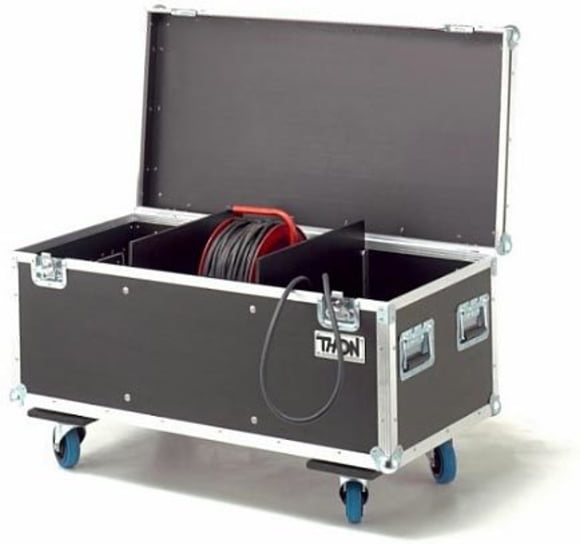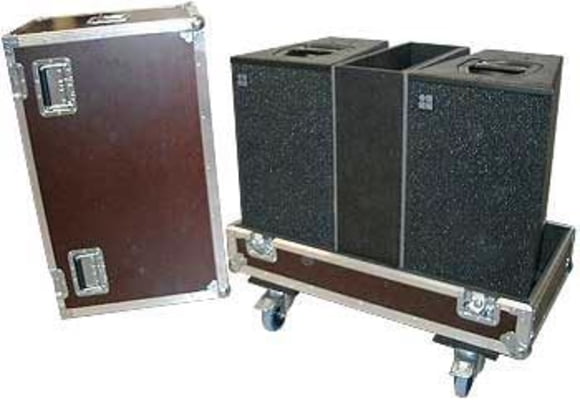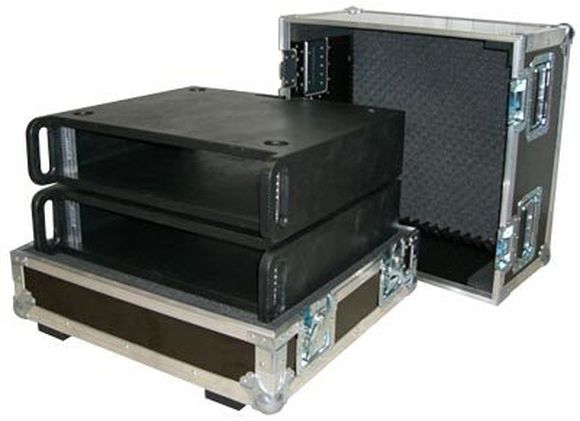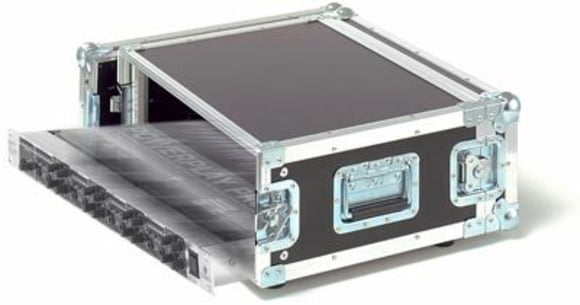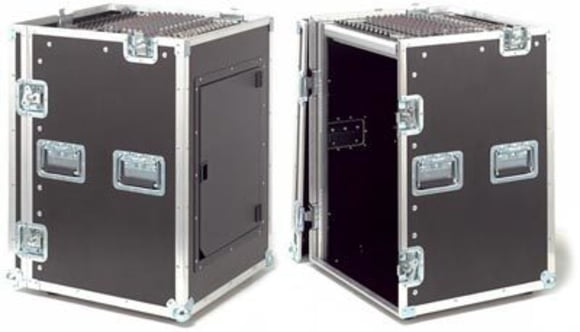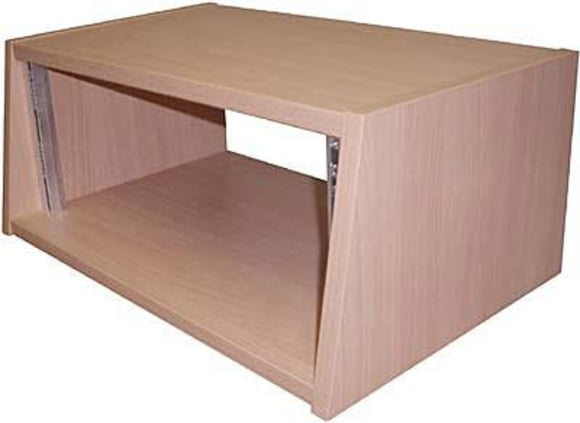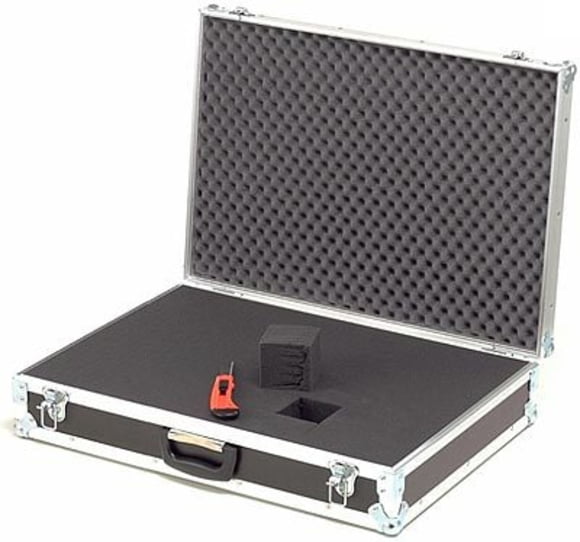4. Types
Once you have decided which construction type to go for, you have to take the next step. Now you should come to a decision on how your instrument/equipment should be packed.
Trunk cases
The trunk case is the classic type of a large box with a lid. Trunk cases are suitable, for example, for cables (careful – those can get real heavy real quick!), mic stands, drum hardware or other equipment. You should make sure that you don't order too big a case. If you pack to much stuff into it, it'll take a lot of work to manoeuvre it. Ever looked for a cable in a huge case full of them? Then you'll know what I'm talking about.
But trunk cases are also often used for lighting equipment, instruments, etc. The are the ideal transport container for anything which can be removed from the case easily. With larger cases, casters fixed to the bottom of the case can make transport a lot easier.
Hat cases
Whereas with trunk cases you open the lid to load and uload the case, with a hat case the transported good remain in the bottom part. The main part of the body (the hat) is simply taken off in one piece. The instrument/equipment can often even be used “from the box”.
You should opt for a hat case if your equipment is too heavy or too bulky to be lifted from the case or if it can simply stay inside it (mixing desks, guitar combos, fog machines, DJ equipment etc.).
The rack-in-rack or rack-in-case version is an interesting special construction for very sensitive equipment (e.g. parts with tubes). It features a sturdy outer case with a shock-absorbing layer of foamed material. The instrument itself is stored on a rack. This construction should be sufficient protection for accidents, in case the case drops from a truck's loading platform, for example.
Rack (Double door racks)
This might be the standard solution: one instrument – or several – firmly and permanently fixed into a case. With this option, you need not do any tricky size calculations, at least: the standard dimensions are the famous 19 (19 inches = 48.26cm). This figure refers to the width of the front cover. The distance between the mounting holes, which are necessary to mount the devices into the rack, is 46.5cm.
What you definitely have to pay attention to is your equipment's mounting depth and the way in which you want to wire up your system in the back. It's best to play it safe in this respect, too: you'll need about 2 units (about 90mm) more space if you use the standard 6.3mm jacks or xlr connectors.
One last note on height units (1 unit = 44.5mm): let's assume you want to mount 1 pre-amp, two effects, one tuning device and one rack light at 1 unit each – then you would need exactly 5 units of height, right? What if, however, some time later you decide to extend your equipment by a stereo EQ and another effect device? Your rack would be full, no more space left. So it's a good idea to calculate above your current need by about 1-2 units when ordering a rack. The mounting holes you don't immediately need are covered by a blind – and they also give your equipment some needed extra ventilation!
L-racks and triple door racks
I've been talking a lot about vertical racks so far – so what's left...? horizontal ones, of course! Life can be so easy sometimes :-)
But seriously: many small mixing desks can be mounted into racks (at least they can if you use an optional rack mount). The rack must therefore feature corresponding rack mounts on the top side and must be able to be closed with a lid. Thankfully, mixing desks are quite flat, and so allow further devices to be mounted vertically below the mixer. How many units are taken up by the mixer and how many units remain for the other devices depends on the mixer's mounting depth. A normal l-rack's back is normally closed to ensure stability. To enable access to the devices from behind l-racks often feature a service hatch.
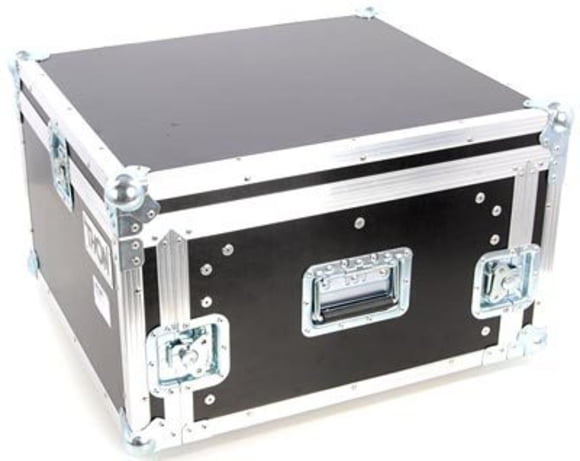
Ideally, of course, the back of the devices would be freely accessible. Et violà: we present to you the triple door rack. Thanks to its three lids, wiring up your system is no longer a problem. Without a lid, the two sides appear rather Spartan, but once a few devices are mounted into it, it becomes sufficiently stable. Furthermore, the way the lid construction lends signifcantly more overall stability.
Studio racks
They are the kings of rack design and intended only for fixed, stationary use, of course, as front and back covers are usually not included. It you want to set up a permanent studio and don't entirely want to do without outboard equipment (which is, of course, also an option), this is the version you should choose.
Briefcase style
For keyboards. Guitars, bases, mics, etc., that is, for all instruments and devices which are rather flat and not to be mounted permanently, there is always the option of going for a briefcase-style case.
The briefcase shown here comes with a pre-cut foam insert. This flex-cut construction allows you to quickly adapt the padding to your needs; you simply take out as much of the padding as necessary. If you want to use the case for a different instrument later on, you can order replacement padding. This is probably the most universal and cheapest version of equipment cases. There is, of course, a host of cases available which are designed for specific instruments or equipment. Make sure, therefore, that prior to ordering you have the exact designation in front of you (eg. the Thomann item number). Just knowing that you play an 88-key master keyboard is not enough!


